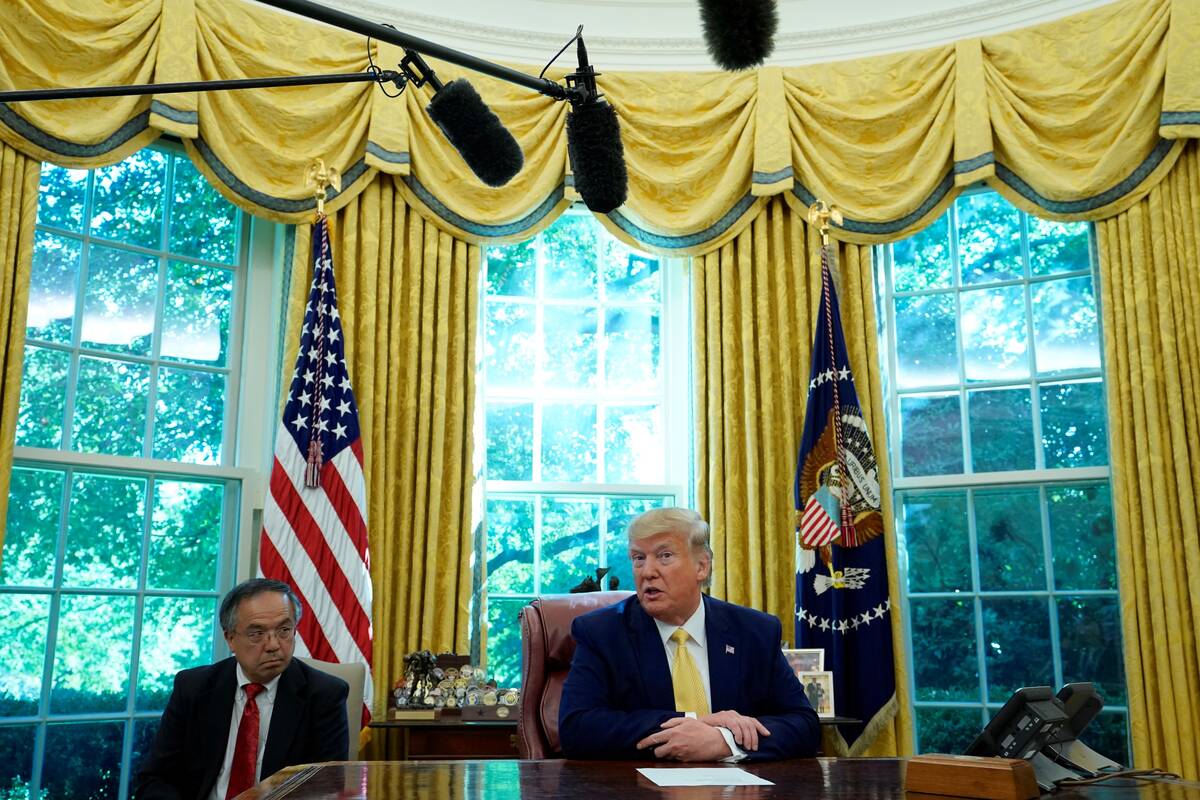So the Trans-Pacific Partnership is officially dead, but the deal had already been on life support for quite some time. As America was embracing a new era of economic nationalism, even Hillary Clinton vowed during her campaign to kill the deal.
No big loss for Canada, since there is no deal, but certainly a missed opportunity for Canadian agriculture, mostly for our cattle, hog, maple syrup and other industries.
Now, all eyes are focused on NAFTA. As Washington rethinks its economic relationship with Mexico, Canada hopes not to become collateral damage, particularly in agriculture.
Read Also

When farmers vote against their interests
U.S president Donald Trump has left many clues over the years that many of his actions weren’t going to necessarily be in the best interests of American farmers.
But first, let’s just assume the Trump administration cares about Canada, just for a second. Agri-food trade between the two countries is almost at $50 billion a year. Many food ingredients and finished food products are traded daily across the border.
As an example, any hamburger sold in North America can be used as a symbol to show how integrated both agricultural economies are. Saskatchewan wheat to make the bun is processed in the United States, Alberta beef again processed in the U.S., B.C. mushrooms, and California tomatoes — the mix is astounding. This is the reality Washington is likely aware of already.
Donald Trump’s appointment for the secretary of agriculture happened days before inauguration. This could be indicative of how unimportant agriculture and food policies are to Trump. Nevertheless, his pick was former Georgia governor Sonny Perdue. A veterinarian by profession, he was once a Democrat who converted to the Republican Party before becoming governor. He understands the cattle industry quite well and is a clear supporter of Trump’s anti-immigration policy.
As Perdue is a former business person in the fertilizer industry, it’s hard to see how his vision for American agriculture could hurt Canada, no matter what happens with NAFTA, but anything is possible. The silliness of the country-of-origin labelling rule, known as COOL, haunted our livestock industry a few years ago. COOL is consistent with Trump’s America-first approach, so it could potentially return.
In Canada, Chrystia Freeland’s appointment as minister of international affairs spoke to her ability as a good communicator and an astute politician. But given what happened with the most recent CETA talks, her negotiating skills remain unproven, at best. And while Ottawa was appointing a person banned from Russia, Washington was endorsing Rex Tillerson as secretary of state, who is a friend of Russia and an astute business person. Not clear how the Americans took the news, but chances are the appointment barely caught Washington’s attention. And that’s a problem. If we add our government’s stance on immigration, marijuana, and climate change, tensions could mount quickly between Ottawa and Washington, which in turn would not go unnoticed by many. Given that most of its wealth comes from trade with the United States, Canada must find ways to be more relevant to Americans.
While America is trying to get a better read of what could happen with a free world that is led by Trump, Ottawa is getting busy. The recent cabinet meetings with Trump’s son-in-law were as intriguing as they were strategic, as the Canadian government recognizes the need to change its tune, and fast.
One recent move by Ottawa, which went almost unnoticed due to the hoopla going on in Washington, was the repeal or amendment of almost 200 different tariffs on food ingredients being imported from the United States. The list includes several fruits and vegetables, cereals and grains, spices, fats and oils, food preparations and chocolate products. All are now duty free. This equates to about $48 million worth of tariffs, a significant amount for our food industry. The list, however, did not include any ingredients affecting our highly protectionist supply management regime in the dairy, egg and poultry sectors. This could be more ammunition for U.S.-based dairy groups requesting the end of our quota system and high tariffs on imports.
The good news is that it will cost less for processors to buy from suppliers from the United States. It won’t do much to bring down Canadian food retail prices, but it will certainly help our food-manufacturing sector, which desperately needs this. Most important though, this decision sends a clear signal to Washington that Canada wants to buy American — Ottawa’s most important trading position right now.
Ottawa is starting to make interesting decisions which should set up our country well for the upcoming NAFTA talks.
In the end, Washington needs to give some sign that it cares about Canada’s economic role and sees it as a key trading partner. This has yet to happen.















